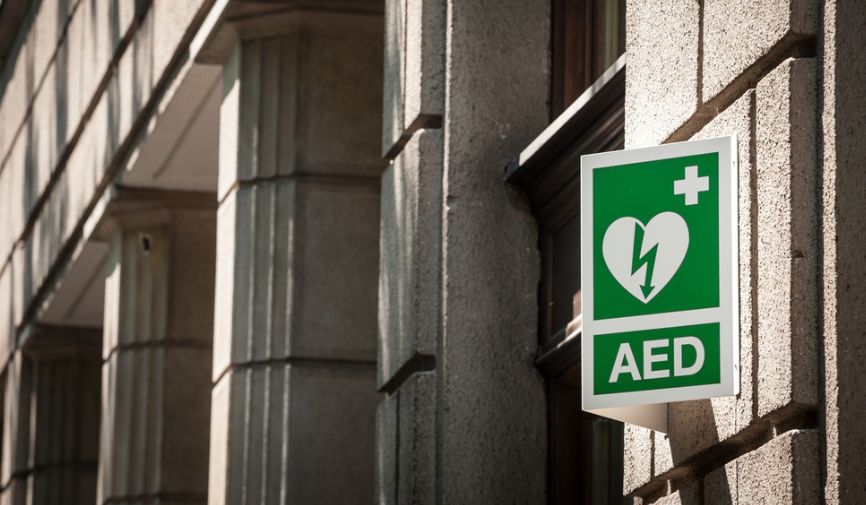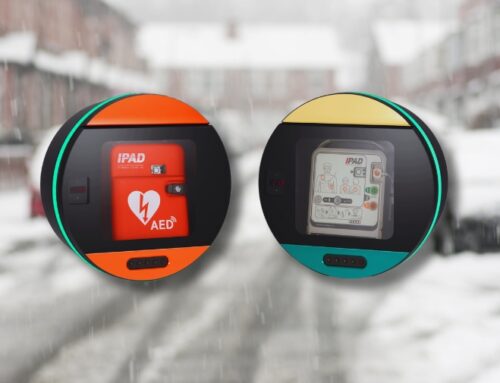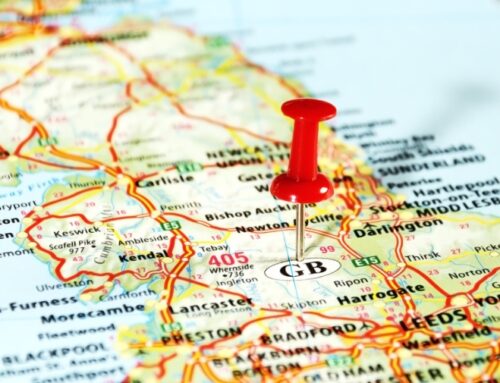[vc_row][vc_column][vc_column_text]How do you know where your nearest defibrillator is? We think most people should be able to answer this in a heartbeat – but if you can’t, it’s not your fault. The truth is, it’s information that should be widely circulated; taught in schools, promoted in TV and radio ad campaigns, and placed in posters in prominent public locations.
In fact, when you consider that there are over 30,000 out-of-hospital cardiac arrests in the UK each year with a survival rate of less than one in ten, it’s really staggering that the government and health authorities aren’t doing more to get the message out there.
Unfortunately, how to find your nearest defibrillator is not something that’s currently widely known – despite how many lives it might save. So it falls to pieces like this blog to do the educating instead!
How to find and use your nearest defib
For ease, we’ll break this up into two sections:
- How to find your nearest public defibrillator
- How to use a defibrillator
Before that, though, we’ll answer one incredibly important question that can make all the difference when trying to save a life…
Do you do CPR before AED?
Yes. As detailed in our post ‘What Happens When You Use A Defibrillator?’ when you witness someone collapsing with no visible signs of life, the first thing you should do is check to see if they need CPR. The tell-tale signs of this are that they won’t be breathing, or will be breathing irregularly or shallowly. If that’s the case, the chances are they have suffered a cardiac arrest.
In this situation, you should urgently begin CPR to keep blood pumping around their body and through their heart while someone else calls 999 then goes to retrieve their nearest publicly accessible defibrillator.
How to find your nearest defibrillator
[/vc_column_text][vc_empty_space][vc_single_image image=”2746″ img_size=”full”][vc_empty_space][vc_column_text]In most areas of the UK, the 999 service has access to a national network of registered defibrillators called The Circuit. So when you call 999 and tell them you need the location of your nearest defibrillator, they should be able to point you towards it.
You can also look for your nearest defibrillator, or ask at nearby businesses, leisure or shopping centres, who may have a defibrillator secured somewhere but not immediately publicly accessible.
Many publicly accessible defibrillators are stored in wall boxes like our DefibSafe cases. These are typically green and yellow, with the word ‘Defibrillator’ clearly printed on them. They can be affixed to the walls of buildings or housed in converted telephone boxes, as mentioned in our piece ‘The Many Places You Can Keep A Defibrillator’ and featured in our Christmas post about lifesaving stories. If you cannot see one immediately around, try looking for a logo that shows a heart with a lightning bolt through it – like the image at the top of this article.
Alternatively, there are some other options to help with how to find your nearest defibrillator. First, The National Defibrillator Database has an interactive map that can help you locate the nearest defibrillator registered with the service. There is also a Defib Map app available for iPhone and Android.
However, we must stress that here at WEL Medical, the initiative we back wholeheartedly is The Circuit. In an emergency we would always recommend calling 999 and asking them to locate your nearest AED. If you own an AED, we would encourage you to register it with The Circuit as soon as possible.
How to use a defibrillator
Once your nearest defibrillator has been located and retrieved, lay it down by the casualty and turn it on. Then take out the pads and place one below the right clavicle, and the other just below the left pectoral muscle. (There should be a diagram on the defibrillator or pads that shows you where this is). Many modern defibrillators like our own iPAD SP1 have audio instructions that will talk you through the setup and usage of the device.
N.B. Before placing both pads, check to see if the casualty has a pacemaker by looking for a bump or lump on their chest. If you find one, reposition the pad so it isn’t covering the bump.[/vc_column_text][/vc_column][/vc_row][vc_row][vc_column][vc_empty_space height=”16px”][vc_single_image image=”2747″ img_size=”full”][vc_column_text]Next, open or remove the shirt of the casualty and dry their chest if needed. You may also need to remove hair from their chest using a prep razor (there is one included with the iPAD SP1).
Once the pads are affixed and the unit is on, the defibrillator will check the casualty’s heart rhythm to see if it is shockable. If it is, a semi-automatic AED will prompt you to administer the shock yourself by pressing the shock button. A fully automatic AED will prompt you to stop delivering CPR and stand back before delivering the shock automatically.
Please note that if someone is in cardiac arrest it is not possible to make it worse by shocking them. If the AED prompts you to shock them, do not hesitate to follow this instruction. Every minute after a cardiac arrest without CPR and defibrillation lowers their chances of survival by 10%, so every single second is vital.
After a shock, the defibrillator may prompt you to consider CPR before continuing the cycle again. If it detects their heart rhythm has normalised and they show signs of life, place them in the recovery position and keep them warm and comfortable until the emergency services arrive.
And that is how to find and use your nearest defib. We hope you find it helpful!
Need an AED for your local area?
At WEL Medical we supply what many consider to be the most advanced and readily usable AED on the market, the iPAD SP1, along with DefibSafe cabinets designed to keep your AED safe and usable in all conditions.
To learn more, check out the blogs below or visit our shop to see our stock of semi and fully-automatic iPAD AEDs.[/vc_column_text][/vc_column][/vc_row][vc_row][vc_column][vc_empty_space height=”16px”][vc_column_text]
Related articles
- What Happens When You Use A Defibrillator?
- World First Aid Day: CPR Guidance in a Covid-19 World
- The Many Places You Can Keep A Defibrillator
- Places You Wouldn’t Think Need a Defib (But Really Do!)
- World Heart Day: Heart Attack or Cardiac Arrest?
[/vc_column_text][/vc_column][/vc_row]





